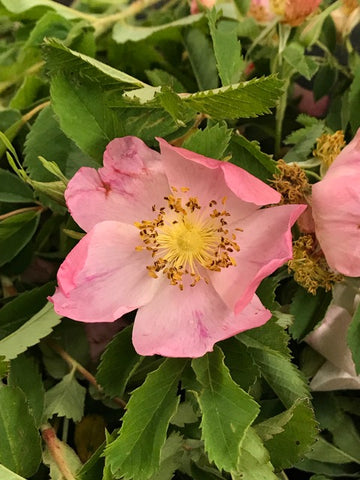
We at Prairie Star often write and speak about the magical plants that are part of our bioregion, which we fondly refer to as the Golden Prairie. Our posts share the traditional uses of these valuable plant allies, how to identify them, how to propagate them, and the many ways to prepare them.
Even with our devotion to the natural world around us, we can sometimes take our native plants for granted. It is a necessary and useful ritual to stop and remind ourselves of the impact of our harvesting decisions. My friend, Rebecca Altman, shared her guidelines for wild harvesting in one of her Kings Road Apothecary newsletters. I paraphrase her guidelines, which include the following steps:
- Pick a place that you feel connected to, in some way. I’m fond of a small native prairie fragment that I’ve visited for years, enchanted by the story of its history and its cemetery.
- Explore it – get to know the landscape – not only the plants, but the terrain, the animals, the weather. Visit it often, and pick up after yourself and others.
- Learn about the plants that you’ve observed, using botanical field guides and other sources.
- Choose one plant at a time. Get to know it – its leaf shape, smell, flower, preferences for sunshine and water, its lifecycle. I learned about the habits and resilience of our lovely Prairie Wild Rose through this quiet process.
- Before gathering, sit quietly and ask for permission. When you gather, be sustainable – plant seeds, seedlings or rootlets that come with your harvest back into their habitat. Take only as much as you can process. Pick from different areas to minimize impact. Leave a gift – something that you’ve brought intentionally. Be ready and willing to walk away if you are not granted permission.
- Come back to this place again – in 2 weeks, 2 months, a year, and observe the changes to the landscape, how plants adapt gracefully. A few months after a controlled burn of the prairie, I had difficulty finding prairie wild rose in the usual places. The next spring, it returned even more vigorously to the slope that it had called home.
- Become part of the ecosystem – almost as if the line blurs between where it ends and where you begin.

(Heather and Molly enjoying a day identifying prairie plants at a local county prairie conservation area)
An important part of this process is to know the rare and endangered plants of the area and refrain from harvesting them – perhaps becoming involved in propagating then and encouraging their growth. Did you know that many of our treasured bioregional plants are on United Plant Savers rare and endangered species lists? The list includes goldenseal, American ginseng, black cohosh, bloodroot, echinacea, slippery elm and trillium.

(Pictured is Echinacea one of at-risk plants of the prairie according to the United Plant Savers Organization)
We encourage you to educate yourself on methods of conservation. Read our blogs for opportunities to become involved in care of our valuable native plants. Join local groups, like the Prairie Herbalists of Nebraska facebook group and become involved in group activities. Watch for our annual spring seed exchange and plant sale events, where we encourage local residents to trade or purchase plants to become part of urban and wild landscapes.

(Pictured is one of the rare undeveloped prairies in our area)
We can't afford to wait for the scarcity of our cultivated and wild-harvested plants to become a reality. Conservation IS OUR connection to the natural world that surrounds us.

(Pictured Prairie Wild Rose peeking out from the prairie grasses)

(A close up of Prairie Wild Rose)
Here are some of our favorite resources to learn more about prairie conservation efforts:
https://www.goldenhillsrcd.org/
https://www.facebook.com/HarrisonCountyConservation/
https://www.facebook.com/groups/1682015088722113 Prairie Herbalist of Nebraska

Leave a comment